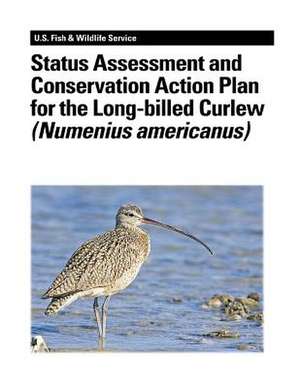Status Assessment and Conservation Action Plan for the Long-Billed Curlew (Numenius Americanus)
Autor Suzanne D. Fellows, Stephanie L. Jones, U. S. Department of Interioren Limba Engleză Paperback
Preț: 112.93 lei
Nou
Puncte Express: 169
Preț estimativ în valută:
21.61€ • 22.48$ • 17.84£
21.61€ • 22.48$ • 17.84£
Carte disponibilă
Livrare economică 24 martie-07 aprilie
Preluare comenzi: 021 569.72.76
Specificații
ISBN-13: 9781479141173
ISBN-10: 1479141178
Pagini: 108
Dimensiuni: 216 x 280 x 6 mm
Greutate: 0.27 kg
Editura: CREATESPACE
ISBN-10: 1479141178
Pagini: 108
Dimensiuni: 216 x 280 x 6 mm
Greutate: 0.27 kg
Editura: CREATESPACE
